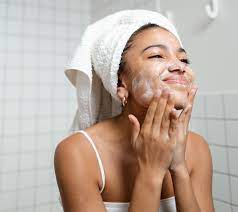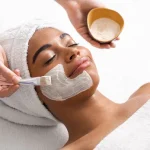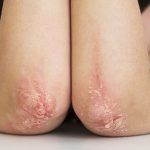Narrowband UVB Treatment for Chin Acne
Narrowband UVB (NB-UVB) treatment has emerged as a promising therapy for various skin conditions, including acne, particularly chin acne. This treatment method leverages a specific wavelength of ultraviolet light (311-313 nm) to achieve therapeutic effects, which are less harmful compared to traditional broadband UV treatments.
The precision of narrowband UVB allows for targeted therapy, reducing the risk of excessive UV exposure while optimizing treatment efficacy.
Understanding Chin Acne
Chin acne, often categorized under facial acne, is a common dermatological issue that manifests with various types of lesions, such as blackheads, whiteheads, pustules, and cysts, primarily around the chin area. The causes of chin acne include hormonal fluctuations, stress, diet, and genetics. Hormonal changes, particularly during menstrual cycles in women, can lead to an overproduction of sebum, which clogs pores and invites bacterial growth, resulting in acne.
Mechanism of NB-UVB Treatment
NB-UVB treatment works by penetrating the skin’s surface and regulating the skin’s immune response. It reduces inflammation by inducing apoptosis (cell death) in T-lymphocytes, which are white blood cells involved in inflammatory processes. This mechanism is particularly important in acne treatment, as inflammation is a key component of acne pathogenesis. Additionally, NB-UVB light can reduce sebaceous gland activity, decreasing sebum production, which is another crucial factor in acne development.
Clinical Efficacy for Chin Acne
Numerous clinical studies have indicated the efficacy of NB-UVB in treating various skin conditions, including acne. One significant advantage of this treatment is its ability to reduce inflammatory lesions, making it effective for persistent chin acne. The focused wavelength helps in targeting the affected areas without causing extensive damage to the surrounding skin.
For patients with chin acne, NB-UVB treatment can significantly reduce the number of pustules and papules. Studies reveal a marked improvement in skin texture and a reduction in acne-scarring when used consistently over a prescribed period. Patients often experience visible results within a few weeks of initiation, although the full benefits may take several months to manifest.
Procedure and Treatment Duration
The NB-UVB treatment procedure typically involves exposing the affected skin to the ultraviolet light in controlled sessions. Each session’s duration is carefully calibrated based on the patient’s skin type and severity of the acne. Dermatologists usually start with shorter exposure times, gradually increasing them to minimize any potential side effects such as redness or burn.
Most treatment regimens include multiple sessions per week, spanning several weeks to months, depending on the acne severity. Consistent adherence to the treatment schedule is crucial for achieving optimal results. Protective measures, such as wearing goggles to shield the eyes from UV light, are standard during the procedure.
Safety and Side Effects
NB-UVB treatment is considered relatively safe compared to broadband UV light therapy due to its specific wavelength, which minimizes exposure to potentially harmful UV radiation. However, like all treatments, it has potential side effects. Common side effects include mild redness, dryness, and itching at the treatment site. These are generally temporary and resolve after the treatment sessions.
Long-term side effects are rare but can include hyperpigmentation or hypopigmentation, particularly in individuals with darker skin tones. There is also a theoretical risk of carcinogenesis with prolonged UV exposure, although NB-UVB therapy is believed to carry a minimal risk compared to other UV treatments.
Combining NB-UVB with Other Treatments
Often, NB-UVB treatment is used in conjunction with other acne treatments to enhance efficacy. Topical treatments, such as retinoids and benzoyl peroxide, can be continued during UV light therapy, provided that the skin does not exhibit excessive irritation. Oral medications, such as antibiotics or hormonal therapies, may also be prescribed alongside NB-UVB to address underlying causes of acne.
Combining NB-UVB with photodynamic therapy (PDT) has shown promising results. In PDT, a photosensitizing agent is applied to the skin before exposure to NB-UVB light. This combination can enhance the treatment’s effectiveness by boosting the photosensitizer’s activity, leading to better penetration and killing of acne-causing bacteria.
Patient Selection and Considerations
Not all patients are suitable candidates for NB-UVB treatment. Dermatologists typically evaluate factors such as skin type, the extent of acne, medical history, and any previous treatment responses before recommending NB-UVB therapy. Individuals with a history of skin cancer or those on photo-sensitizing medications might need alternative treatments.
For patients with recurrent or severe chin acne that does not respond well to conventional treatments, NB-UVB therapy offers a viable alternative. Adolescents and adults alike can benefit from this targeted approach, especially when traditional therapies fail to provide satisfactory relief.
Cost and Accessibility
The cost of NB-UVB therapy can vary widely depending on geographic location, the facility providing the service, and the number of sessions required. While it may be more costly initially compared to topical treatments, the long-term benefits and potential for decreased recurrence can justify the investment.
Insurance coverage for NB-UVB treatment can vary. Some insurance providers may cover the cost, particularly if the treatment is deemed medically necessary by a dermatologist. Patients are advised to consult with their insurance companies to determine the extent of coverage for this particular therapy.
Future Prospects and Advances
Ongoing research continues to explore the potential of NB-UVB therapy, not only for acne but for other dermatological conditions. Advances in phototherapy technology aim to improve treatment precision and reduce side effects further. Innovations, such as home-based UVB treatment units, are also emerging, potentially making this therapy more accessible and convenient for patients.
Conclusion
Narrowband UVB treatment represents a significant advancement in the management of chin acne, offering a targeted, effective solution for patients struggling with this persistent condition. By leveraging a specific range of UV light, it addresses the core components of acne development, including inflammation and sebum production, while minimizing potential side effects. With proper patient selection, careful administration, and consideration of combining therapies, NB-UVB can play an integral role in achieving clearer skin and enhancing overall dermatological health.

Silvia Malgot is a renowned author and expert in the fields of skincare and beauty, with over a decade of experience researching and writing about effective treatments, holistic approaches, and innovative technologies. Her passion for empowering individuals to feel confident in their own skin has driven her to explore cutting-edge solutions and timeless traditions in skincare.
Silvia has contributed to several leading health and beauty publications, providing insights into trends, product recommendations, and practical advice grounded in science. Her approachable yet detail-oriented style has made her a trusted voice for readers seeking clarity in an overwhelming industry. When she’s not writing, Silvia actively participates in workshops and seminars, sharing her knowledge and inspiring others to prioritize self-care through sustainable, informed practices.


